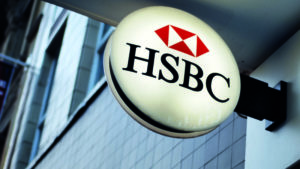The answer for now appears to be that it is easier said than done given the strengths of the business and the current state of competition in market.
The latest broadside against SJP came from Which? and involved a mystery shopping sting, which assessed 12 SJP advisers, with the consumer group arguing that it found several wanting in terms of disclosure of the services and charges involved.
Covered in depth by the Sunday Times, the story led to the usual social media storm while Which?, in time-honoured tradition, has passed its findings on to the regulator.
Of course, this isn’t the first critical story, yet given the absence of any substantial regulatory action, one has to assume that SJP has passed muster, despite other advisers querying the firm’s interpretation of the rules and marvelling at what they see as its high initial charges on investments and early exit penalties on bonds – at least before year six.
Meanwhile in the business pages – as opposed to the money pages – the charges merit a good news story.
Alliance Bernstein recently described the firm as a “high-quality compounder” which should continue to drive strong net flows at high margins with its advice-led model while asking what the firm could look like in 2026.
Among other things, the broker raised its target price for the stock from 1220p to 1340p and predicted the firm would increase its UK partner and adviser numbers by 9% a year for the next five years and 6% for the five years after that, and to grow assets from around £80bn to £260bn by 2026.
In business terms at least, it looks like SJP can take the criticisms in its stride.
But, if charges are on the high side, where is the competitive challenge?
Canvassing opinion among IFAs, it is very clear that they don’t like the SJP model and argue that they charge significantly less.
However, they also ask why or how they can take on such a ‘behemoth’. Some add that there are enough clients to go round particularly in the wake of the pension freedom reforms.
Others describe SJP as a marketing and recruitment machine, the strongest brand in the market, and “a slick operation – like bancassurance, but better run”.
One person, who has attended one of the firm’s recruitment drives at Mayfair hotel Claridges, says: “I attended a recruitment day for would-be joiners and there was nothing in the day that I heard that was remotely unprofessional, or lop-sided. It was a bit smooth and bit a slick – but that’s the product of an organisation that has been recruiting for more than 20 years.”
The firm has had a relatively long existence for an advice business. It was founded in 1991 as J. Rothshild Assurance. In 2000, HBOS took a 60% stake though the merged Lloyds Banking Group and sold its final share of the business in late 2013.
Ownership by a bank may have turned from a boon to a frustration during the banking crisis, but it was never ‘taken over’ in terms of its business practices. The firm sits in the FTSE 100 with single digit holdings up to about 5% from a range of well-known asset managers.
During its history, it has maintained a famously vigorous sales culture while seemingly coping with the big regulatory shake ups of depolarisation and the RDR. It added DFM Rowan Dartington and tax and technical firm Technical Connection in 2015 and 2016 respectively.
On the client side, regulatory consultant Rory Percival suggests that SJP has been skilled at creating a good quality customer experience.
But he also says that more broadly, the advice market is not competitive. It is based on trust and there is a lack of consumer awareness of the costs and the different options for advice.
Goodmans financial planner Andrew Moore says: “The window for competition is very small. Once someone sits down in front of one adviser, then very little comparison is done. The value in the relationship is rarely dominated by the investment piece. Hence the costs around it aren’t the issue. The client is establishing a trust-based relationship and only wants to go through the process once, leading to high retention levels.
“Therefore, to truly compete with SJP, I need to be in front of that person first and this is a marketing issue. Most IFA firms are growing at a pace they are happy with, so there is little proactive marketing budget in play but SJP are proactive. Until there is a better balance between capacity and excess demand, SJP will appear to have no competition. Nobody does in this space.”
Altus principal consultant Simon Bussy backs this view up.
He says: “Many SJP clients are long-standing – the relationship they have with their partners goes back years. That trusted relationship is worth more to the client than a debate about charges when they need help and advice, not least post Pension Freedoms.
“SJP partners justify their fees just as IFAs justify theirs; while price is important to people, value is more so. While the press and a relatively small number of independent advisers love to ‘bash’ SJP, they report that their annual client questionnaire indicates 82% rated SJP value for money as ‘good’ or ‘excellent’, and 97% said they would recommend SJP to others.”
Many cite the business acumen within the firm. Hargreaves Lansdown’s research director Mark Dampier says: “They have a big moat, they have carried on buying more floor space. That space will run out at some stage, but it means it’s hard for someone else. Also they have big brains behind the business. Most IFAs may be good with clients but not running a business with big ambitions.”
Others cite the SJP’s willingness to pay compensation as key. The firm has always made a virtue of its deep pockets in contrast to smaller advisers.
Another business consultant, speaking off the record, says: “The reason they are successful is not that they are a sly marketing machine and they dupe people. It is because their clients are happy with what they receive.
“Most intermediaries fail to understand that most of the business stays full term, so you have to judge the charges over the full term. The performance stacks up compared with others, but the thing that really makes it, is that if there is a complaint, even if it is doesn’t get to FOS, it is underwritten by SJP and they demonstrably pay.”
To sum up, it is clear the business has many major strengths, while for now rival IFAs do not provide a coherent national challenge though they may win business locally.
It has a significant start on other restricted/vertical advice businesses while provider owned and run restricted models are still in their relative infancy, though it is always possible a major push may come in future.
The digital advice and digital wealth management sector may have an impact too.
Bussy adds: “It will be interesting to see how they evolve their business model to reflect the increasingly digital world we now live in, particularly as digital (‘robo’) advice ‘comes of age’ once the banks and other big brands re-enter the advice market and the propositions become more mature and sophisticated.”
Finally, there will be an increasing emphasis on charges and disclosure with Mifid II, the asset management review and the platform paper, but of course SJP has always adapted successfully to regulation to date.
So for now, and although its bosses cannot enjoy the regular nasty headlines, the SJP behemoth appears largely untroubled for now.







